Tuesday, January 8th 2019

EVGA Unveils the NU-Audio Audiophile-grade Sound Card at CES 2019
What's this? A new high-end internal sound-card launch? From EVGA? We must be dreaming! The NU-Audio internal sound card is the most unexpected product from our visit to EVGA's suite on Monday. Developed in partnership with British audiophile hardware maker Audio Note and sold under the EVGA badge, the NU-Audio is a full-height internal sound card with PCI-Express 2.0 x1 bus interface. At its heart is an XMOS xCORE 200 PCIe audio processor with an Azalia-like pipeline. The main DAC is an Asahi Kasei AK4493, fronted by an Analog Devices OP275 OPAMP for the main headphones channel, and AD8056 for the line-out channel.
The card has some serious input chops as output, with the main line-in powered by an Asahi Kasei AK5572, and a Cirrus Logic CS53456 for the microphone-in channel. As an analog sound card, you only get 2 channels. You'll need optical TOSLINK for 5.1 channels. A combination of WIMA and Audio Note electrolytic capacitors are used across the card. The electrical area is ground-layer isolated, draws power from a SATA power input, and uses a Texas Instruments TPS7A47 voltage regulator. All connections between the electrical and audio areas are filtered, and copper EMI shielding covers vital audio components, in addition to the outer shroud. The PCB itself is chunky (possibly 4-layer with 2 oz copper layers).Moving on to specs that matter, the analog stereo out SNR is rated at 123 dBA, and the line-in at 121 dBA. The audio processor can handle 32-bit / 384 kHz stereo audio formats through the analog channel, and 24-bit / 192 kHz through digital TOSLINK. The card supports high-impedance headphones. The software fully supports the latest versions of Windows 10 and Windows 7. The NU-Audio will command a stellar price tag owing to its Avant Grade components.
The card has some serious input chops as output, with the main line-in powered by an Asahi Kasei AK5572, and a Cirrus Logic CS53456 for the microphone-in channel. As an analog sound card, you only get 2 channels. You'll need optical TOSLINK for 5.1 channels. A combination of WIMA and Audio Note electrolytic capacitors are used across the card. The electrical area is ground-layer isolated, draws power from a SATA power input, and uses a Texas Instruments TPS7A47 voltage regulator. All connections between the electrical and audio areas are filtered, and copper EMI shielding covers vital audio components, in addition to the outer shroud. The PCB itself is chunky (possibly 4-layer with 2 oz copper layers).Moving on to specs that matter, the analog stereo out SNR is rated at 123 dBA, and the line-in at 121 dBA. The audio processor can handle 32-bit / 384 kHz stereo audio formats through the analog channel, and 24-bit / 192 kHz through digital TOSLINK. The card supports high-impedance headphones. The software fully supports the latest versions of Windows 10 and Windows 7. The NU-Audio will command a stellar price tag owing to its Avant Grade components.
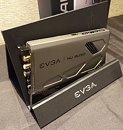
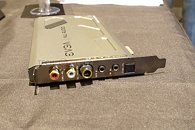
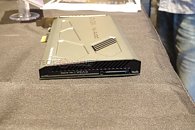
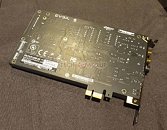
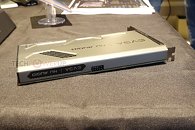
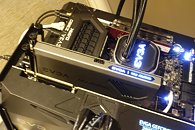
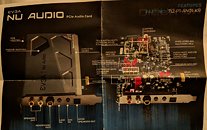
16 Comments on EVGA Unveils the NU-Audio Audiophile-grade Sound Card at CES 2019
I'm VERY curious to see how that turn out.
EDIT: Seems like it's not a pci-e to pci converter, it's most likelly a pci-e to usb2 converter, the xCore 200 only interface trough usb2.0
I like the SATA power connector, though. I'd prefer it have no power connector at all, but most cards are either PCI-E x1 or x16, with x4 and x8 cards (and slots) being rather rare... but at least it's not molex or floppy.
But for the price it will be sold there is many better options of combos dac+amp
Even if all you use are headphones you at least have options going down the road.
The price is apparently $249.
Source: www.sweclockers.com/nyhet/26887-evga-presenterar-interna-ljudkortet-nu-audio
The card also uses USB audio Asynchronous/Isochronous operation with onboard clock oscillators for low jitter; async is an established system within USB audio.
Check out who is using XMOS USB audio solution, compared to Cmedia etc. The XMOS chip puts you in the company of Pros. I guess it depends what you want, something which is actually good, or something that relies on DSP.Bur Brown quote 0.0004% typical THD for the PCM1794, which is -107dB so the AKM is representative of its class - also, this is a 0dB specification and its only dance, pop and metal which is recorded at that kind level. Anything worth worrying about will be recorded at -10dB or below, where the THD will drop away.
Also, the AKM is capable of higher sample rates, native DSD and has a better selection of digital filter options.
ESS chips have issues inside, such as some kind of internal range switching which shows up as artefacts on an amplitude vs THD+N plot - in other words noise modulation, which will be audible.
As you rightly say, though, this is about something to listen to, not compare specs on - if you start making all your choices based on figures alone, you have sold you soul to the devil.